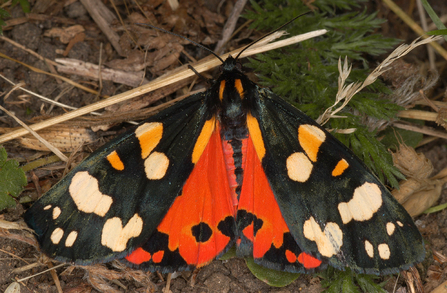
Scarlet tiger ©Malcolm Storey
Protect wildlife for generations to come
Marbled White on Pyramidal Orchid ©Guy Edwardes/2020VISION

Scarlet tiger ©Malcolm Storey
While several species of butterflies are well-loved for their striking patterns and vibrant colours, many moths can hold their own in the fashion department; and this is certainly true of the velvet-cloaked scarlet tiger moth.
These gloriously-coloured insects have dark, metallic black/green forewings with white adornments, but as soon as they take flight they flash their stunning red hindwings: look out for them in gardens, wetlands and near rivers.
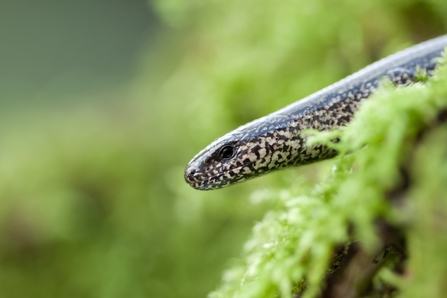
A slow worm (Anguis fragilis). Picture: Jamie Hall
Slow worms are actually legless lizards, not worms or snakes. They don’t tend to bask in the sun like other reptiles, instead staying under log piles or in compost heaps where rotting material provides warmth.
If you do see one, don’t try to pick them up, they’re not only a protected species but may shed their tails as a defence mechanism.
The male stonechat has a distinctive black head and bright white collar.
Look for stonechats perched on the top of bushes, particularly in heathland areas like those at Greenham Common or Sydlings Copse.
The birds are about the size of a robin and are named for their call which sounds like two stones being tapped together. The males have a distinctive black head and bright white collar.
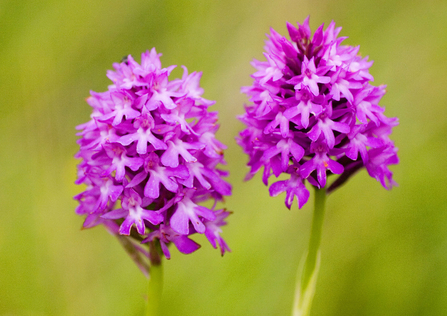
Pyramidal orchids by Paul Lane
Pyramidal orchids are fairly widespread in the UK. You often see them growing in roadside verges (another good reason to stop mowing!) as well as chalk grassland, their more typical habitat: look out for them in flower this month.
The flower spikes have a distinctive pyramidal shape, made up of many individual flowers ranging in colour from pale to deep pink. These orchids are pollinated by day- and night-flying moths and butterflies.
The marbled white loves feeding on purple flowers, such as common knapweed.
One such butterfly is the marbled white, unmistakeable with its black-and-white wings. They love feeding on purple flowers, such as field scabious, common knapweed and wild marjoram on sunny grassland.
The marbled white is expanding its range north and eastwards, possibly as a result of warming due to climate change.
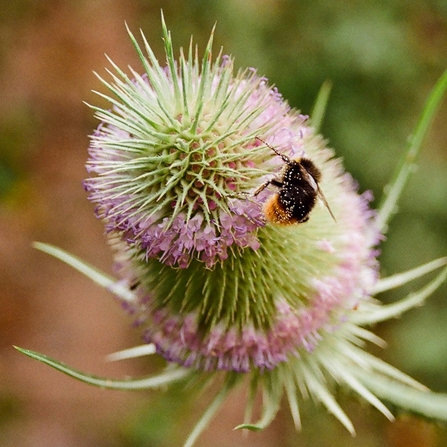
The ring of purple flowers on teasel are loved by bees. Photo by Zsuzsanna Bird.
Teasel is a tall, distinctive wild flower with its prickly stems and egg-shaped seed heads. The ring of purple flowers on teasel are loved by bees. Later in the year goldfinches feast on their seeds.
They're a biennial plant, meaning that they flower in their second year, and are an attractive addition to any wildlife garden.
Peregrines are among the fastest animals on the planet, reaching speeds of up to 200 miles per hour .
Until recently, the peregrine falcon was only found in the north and west of the UK. Yet, over the last couple of decades, it has been spreading south and is increasingly found in urban areas. In recent years, it has found some unusual nest sites, including Derby Cathedral and the BT Tower in Birmingham! Closer to home, a pair has been nesting on All Saint’s Church in High Wycombe, and you can view a live feed of the nest here.
Peregrines are among the fastest animals on the planet, reaching speeds of up to 200 miles per hour when 'stooping' - diving down on its prey from a great height. Prey is usually taken mid-air and consists mostly of birds like feral pigeons and collared doves.
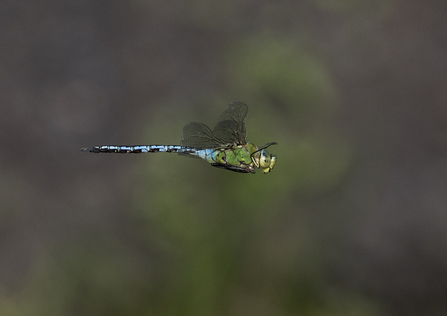
Emperor dragonfly © Chris Lawrence
One of the largest dragonfly species in Europe, the emperor dragonfly flies up high to look for insect-prey, such as butterflies and chaser dragonflies. It catches its victims in mid-air and may eat them on the wing.
A common species of large ponds and lakes from June to August, you can also spot them by canals and ditches, but they’re rarely found away from water.
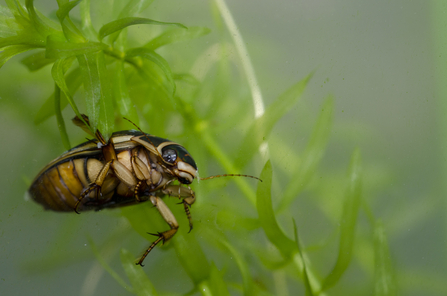
Great Diving Beetle ©Jack Perks
Another voracious predator of ponds and slow-moving water, the great diving beetle hunts smaller invertebrates, tadpoles and even small fish. The larvae are large, fearsome-looking beasts, with big, biting jaws: they look a bit like pale brown, underwater Devil's coach horses. They use damp soil by the edge of the water to pupate in.
The golden-rimmed, blackish-green adults can be spotted poking the tips of their abdomens out of the surface of the water in order to replenish the air supply stored beneath their wing cases.
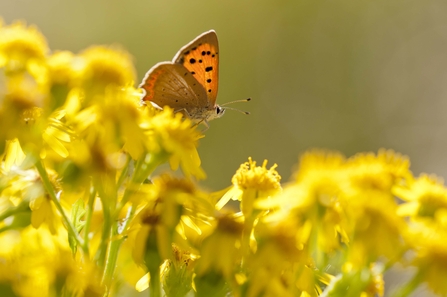
Small Copper on Ragwort ©Ross Hoddinott/2020VISION
The daisy-like, yellow flower heads of common ragwort may be pretty enough to the casual observer, but they belie the poisonous nature of this plant. It is sometimes considered a problematic plant in paddocks and pastures where it can be harmful to livestock if eaten – though it is generally avoided on account of its bitter taste.
Despite this, ragwort is a very beneficial plant for many insects, and more than 200 species of invertebrate have been recorded on it. It is the foodplant of the black-and-red cinnabar moth: sometimes its black-and yellow-barred caterpillars cover the plant, totally stripping the leaves. Common ragwort is a biennial, flowering in its second year from June to November.